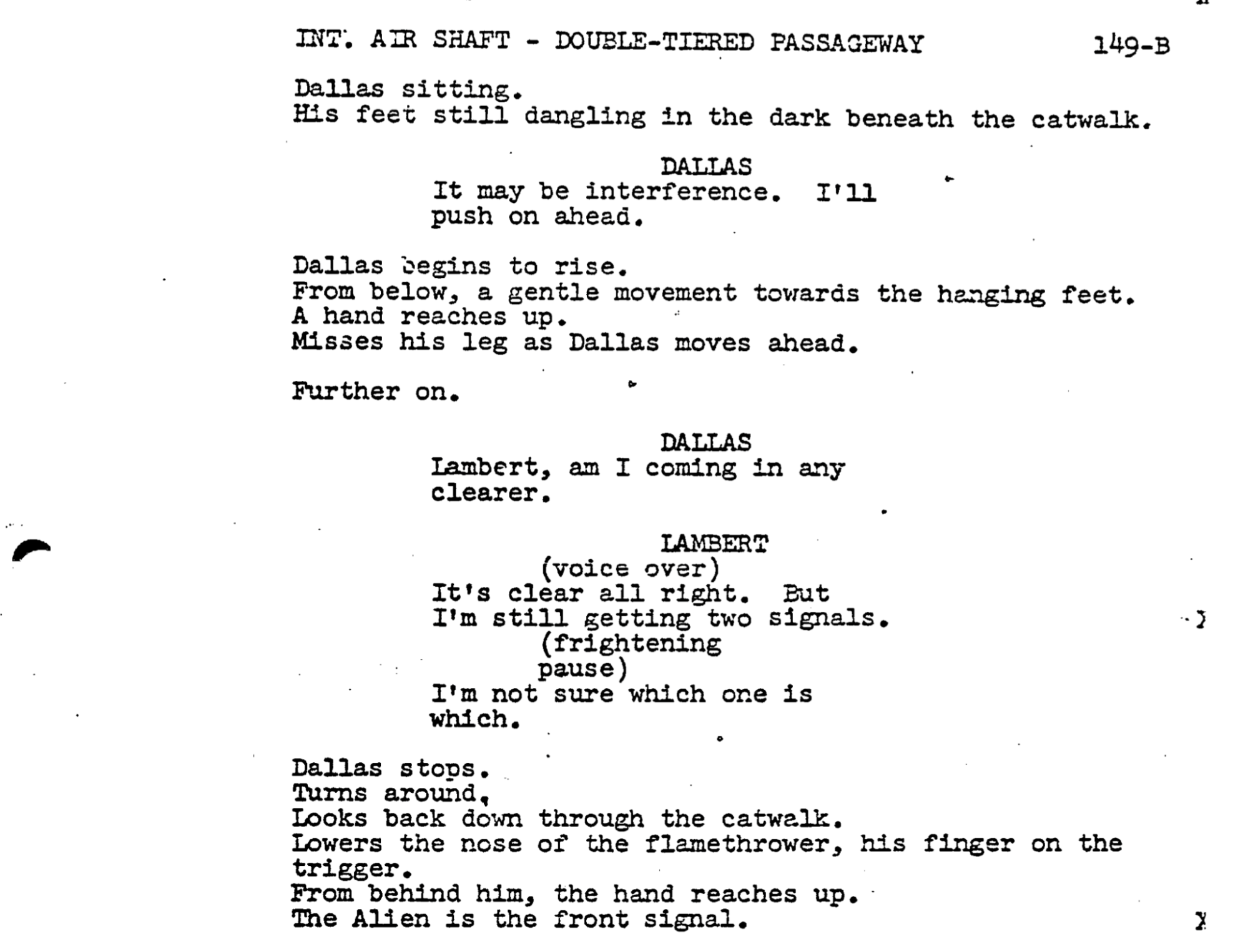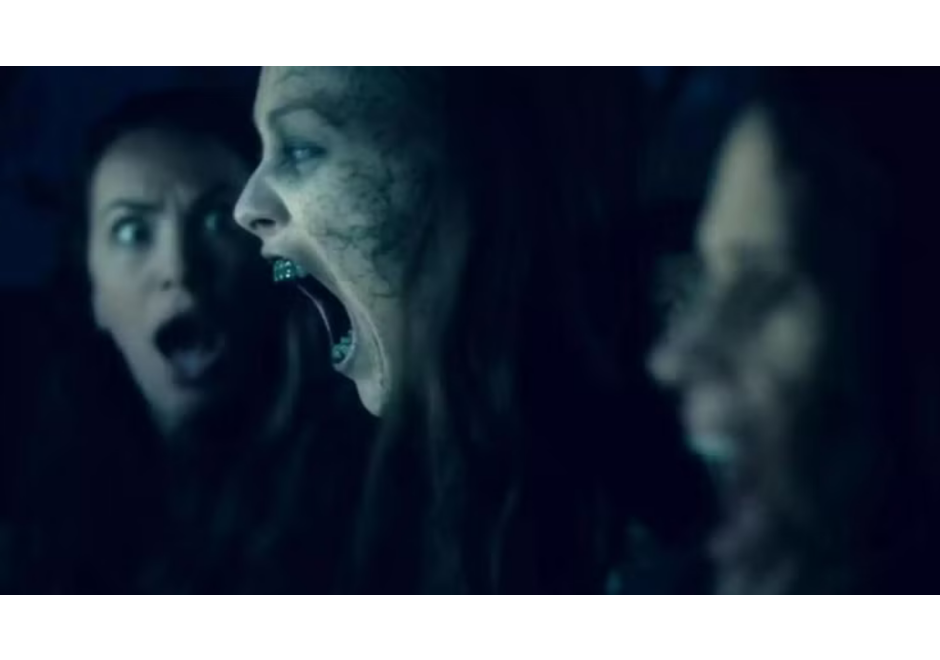Jump scares are one of the most iconic and misunderstood tools in horror. When they are well-crafted, they can send a jolt of fear through an audience, elevating the stakes and tension of a scene. When they are handled poorly, they come off as cheap and forgettable.
Understanding what makes a jump scare effective is essential for screenwriters. Once you know what makes one work, you will learn how to write a jump scare that has maximum impact, and seamlessly integrates into the story instead of one that is tacked on for shock value.
What Is a Jump Scare?
The jump scare, also known as the “cinematic shock,” has a long history in film and television. It’s a technique that uses a sudden, unexpected sound, image, or movement to trigger the audience’s fight-or-flight response.
Long before movies made their silver screen debut, similar surprise effects were key elements of suspenseful storytelling. Film scholar Robert Baird notes in Slate that the earliest cinematic shock can be traced back to the Lumière brothers’ 1895 short Arrival of a Train at La Ciotat, which famously caused audiences to leap out of the way of a train speeding toward the camera.
Once audiences realized they were not in physical danger from what appeared on screen, the jump scare evolved into a staple of thrillers and horror films.
Baird highlights the 1942 film Cat People as the work that “formalized, even institutionalized, the startle for horror and thriller film.” Cat People follows a Serbian woman, Irena (Simone Simon), who believes she transforms into a black panther when aroused. Her lover, Oliver Reed (Kent Smith), is skeptical and sends his assistant, Alice, to investigate. When Irena discovers that Alice has feelings for Oliver, she follows her home. In an iconic scene, Alice nervously quickens her pace as she senses her unseen stalker behind her. Just as the tension peaks, a loud bus hiss suddenly breaks the silence, marking the first use of what became known as the “Lewton Bus” technique:
The “Lewton Bus” popularized the strategy of building tension before abruptly breaking it with a jolt designed to make audiences physically flinch. Variations of this technique appear in some of the most memorable modern jump scares—such as the red-faced demon reveal in Insidious.
How to Write a Jump Scare
While jump scares are fun to experience, they serve a deeper purpose in storytelling. Stories move forward because characters pursue goals and must overcome obstacles that stand in their way. A well-crafted jump scare can act as one of these obstacles, forcing the character to react suddenly and pushing the story into new territory. The horror comes from the character’s lack of control over that obstacle.
In Alien, the Nostromo crew guides Dallas through the ship’s ventilation system as he seals off sections to trap the creature in an airlock, while tracking its movement to protect him. As the alien draws closer, the tracker’s beeps quicken. Panic sets in as Lambert urges Dallas to move faster. But he turns the wrong way, and the alien suddenly appears, shocking both Dallas and the audience.
In that sequence, the crew’s goal is clear: avoid the alien. The obstacle is both the creature itself and the labyrinthine vents. The jump scare isn’t random; it’s structural. When the alien finds Dallas, he dies and the crew loses its leader. The scare changes the story’s stakes and direction.
In the Alien screenplay, pacing plays a crucial role in building the scare. The audience knows the alien is in the same confined, dark space as Dallas. Lambert misreads the tracker signals, unsure who is who. Believing the alien is behind him, Dallas turns around. The last two lines don’t explicitly state what happens, but we understand something grabs him from behind. It’s the alien.


Jump scares on the page can’t make readers physically jump the way film can, but they still have an emotional effect. We understand the consequences of the moment and how it reshapes the story: Dallas is gone; the alien is smart; the crew is panicked and confused. The question becomes: How will they escape this nightmare?
Here is an actionable framework you can use to write an effective jump scare:
- Define the character’s goal: Every scare should interrupt a character pursuing something tangible (escape, survival, discovery).
- Identify the obstacle(s): The scare must represent a genuine threat or complication, not just something convenient and visually cool.
- Build tension gradually: Use pacing, sound, or limited visibility to let the audience sense the threat before it strikes.
- Time the release: Deliver the scare at the exact moment when both characters and audience are most vulnerable.
- Make the scare matter: Every moment matters in a screenplay, so make the jump scare have consequences that alter the story’s direction or emotional tone.
- Avoid “cheap horror movie scare”: If the scare doesn’t change the character’s situation or reveal something new, it’s fluff. Cut it.
This framework will not only help you craft jumpscares that scare you audience, but has weight in the way your story moves forward. Of course, once you become a master at writing jump scares, you can start to play with the framework to write jump scares that no one sees coming, like this one.
Summing Up How You Write a Jump Scare
Well-written jump scares do more than make the audience flinch. They reveal something new to both the characters and the audience, pushing the narrative forward through the horror of the characters’ new reality. By following a clear framework, you can master the craft of this essential horror technique and create a scare that feels purposeful. None of those “cheap horror movie scares” in your next horror screenplay.

